Wizarding World Refresher
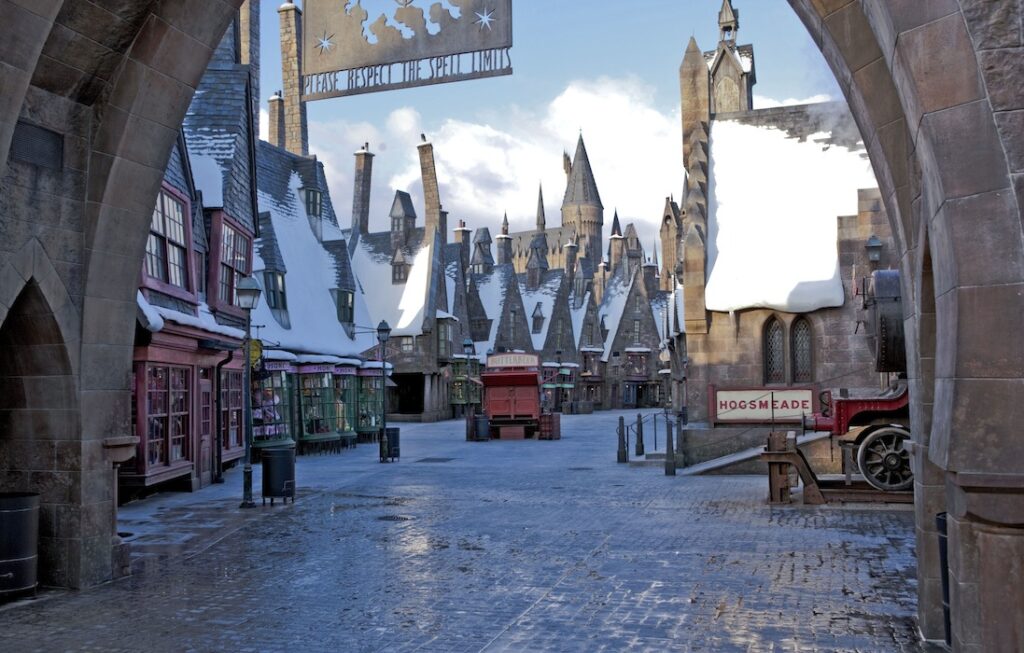
For just a moment, let’s get caught up to speed. As any theme park enthusiast can tell you, there’s one singular theme park project around which the entire industry and its 21st century arc have revolved: the 2010 opening of the Wizarding World of Harry Potter at Universal’s Islands of Adventure.
As the story goes, it was series creator J. K. Rowling herself who insisted that if her Wizarding World were to be translated to a theme park, it would be authentically “real”: cramped little shops rather than vast emporiums built for crowds; Butterbeer and Pumpkin Juice without a Coca-Cola in sight; shops selling wands, robes, quills, and plush owls, not Harry Potter video games or LEGO sets; enchanted Hogwarts choirs, not meet-and-greets with Daniel Radcliffe lookalikes.
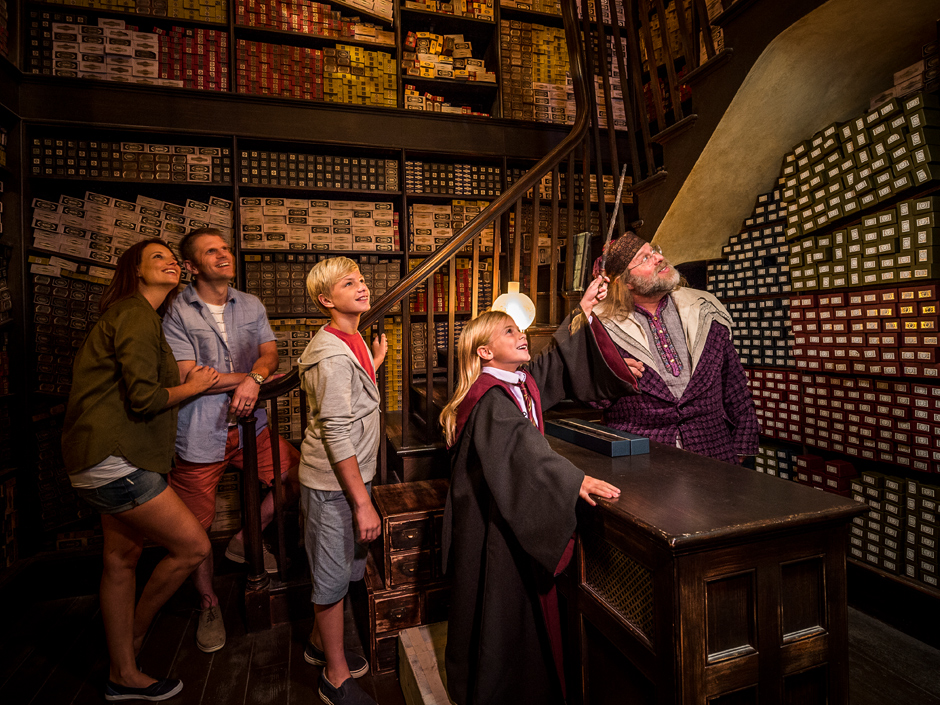
And it turned out to be exactly what guests wanted. Visitors queued hours not for rides, but to step into Ollivander’s wand shop; to buy house robes; to purchase Butterbeer. Plucked from the screen with incredible precision, Universal’s Wizarding World introduced a new era of thematic design – one we call the “Living Land.” Here resided not just a ride, but a world. Incarnate as the snow-covered village of Hogsmeade, the Wizarding World invited guests to step where their favorite characters stepped; to eat what they ate; to shop where they shopped; to live how they lived.
A year after Hogsmeade’s debut, infamous cable giant Comcast made a surprise $14 billion majority acquisition of NBCUniversal. Industry insiders expected that Comcast would quickly spin off Universal’s parks into a standalone entity, then sell it to a private equity group or a competing entertainment company. But – reportedly due to the unimaginable success of the Wizarding World of Harry Potter – Comcast didn’t sell the parks at all. Instead, the company publicly doubled down, saying they intended to invest heavily in Universal Parks & Resorts… And boy did they.
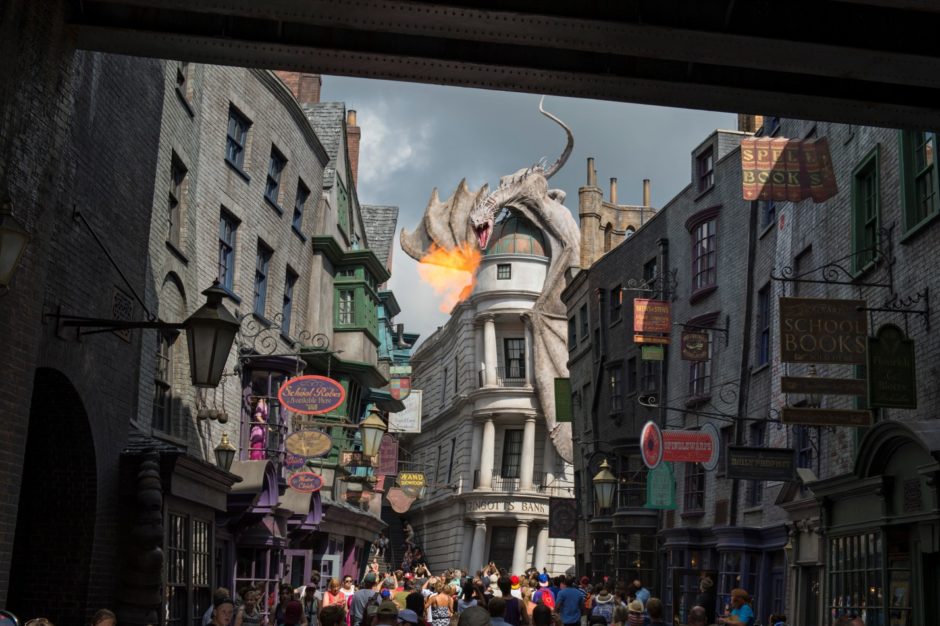
Fast forward to 2014, when Hogsmeade’s follow up – The Wizarding World of Harry Potter: Diagon Alley – opened next door at Universal Studios. Stunningly immersive, Diagon Alley again recreated a fantastic place drawn up by filmmakers to unthinkable ends. Totally habitable and incredibly magical, Diagon Alley is considered by many to be the best “Living Land” in the industry, even topping Disney’s retaliatory measures (Cars Land, New Fantasyland, Pandora: The World of Avatar, Star Wars: Galaxy’s Edge, etc). More to the point, it practically printed money.
The Wizarding World showed all that Universal Creative was capable of, and made a fortune doing it. For a moment, Universal seemed poised to recreate that magic with a third park in Orlando, and a third Wizarding World to go with it…
Epic Universe
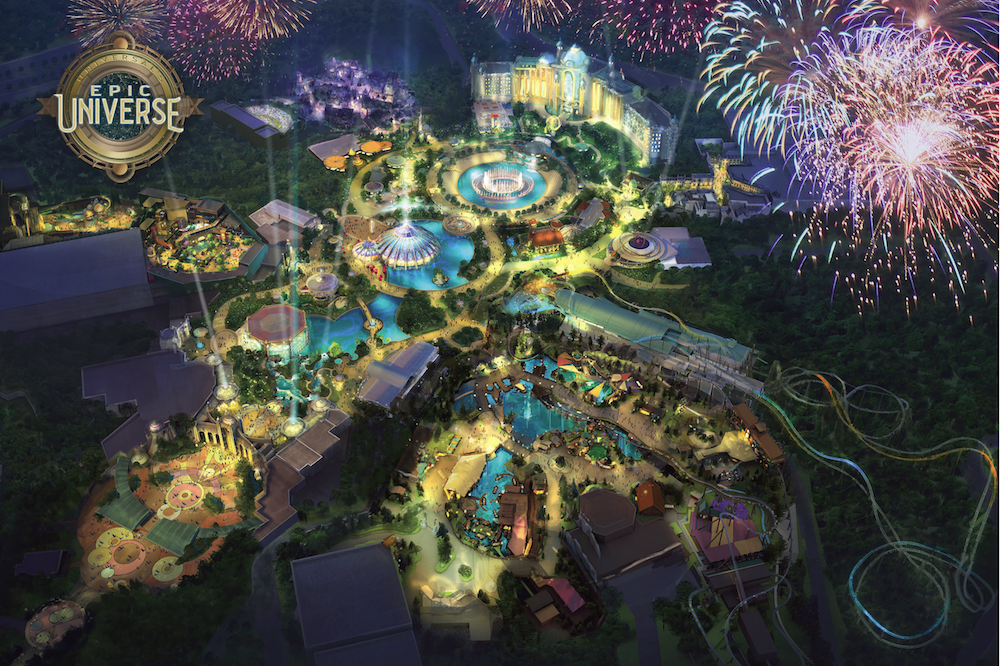
Announced in 2019, Universal’s Epic Universe will be constructed on a whole new campus south of the existing Universal Orlando Resort. This third theme park – set for a 2025 debut – will be the first new Disney or Universal park in the country since 2001’s Disney California Adventure. And fittingly, it’ll make use of every trick the industry’s learned since… meaning Epic Universe will be entirely made of Wizarding-World-style, immersive, “Living Lands.”
Though as of the start of 2024, Comcast hasn’t technically pulled back the curtain on what exactly will inhabit Universal Epic Universe, in their typical “worst-kept-secret” style, everybody knows. Allegedly, Epic Universe will reportedly be made of:
- A central, celestial land serving as the park’s “Hub” from which guests will pass through portals into fantastic worlds;
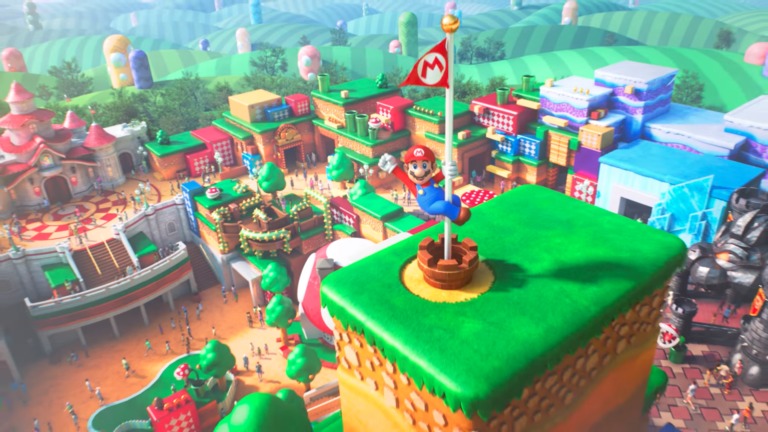
- Central Florida’s long-awaited version of Super Nintendo World with both a “Mario” and “Donkey Kong” sub-section, each with their own anchor attraction;
- A land based on Universal’s Classic Monsters, allowing guests to step into Frankenstein’s Village and Castle in an ode to Universal’s black-and-white, genre-defining horror films of the ’30s and ’40s;
- A land carry guests the Kingdom of Berk, from Dreamworks’ How To Train Your Dragon;
- A third Wizarding World… and of course, that’s where the questions begin…
Place Cachée
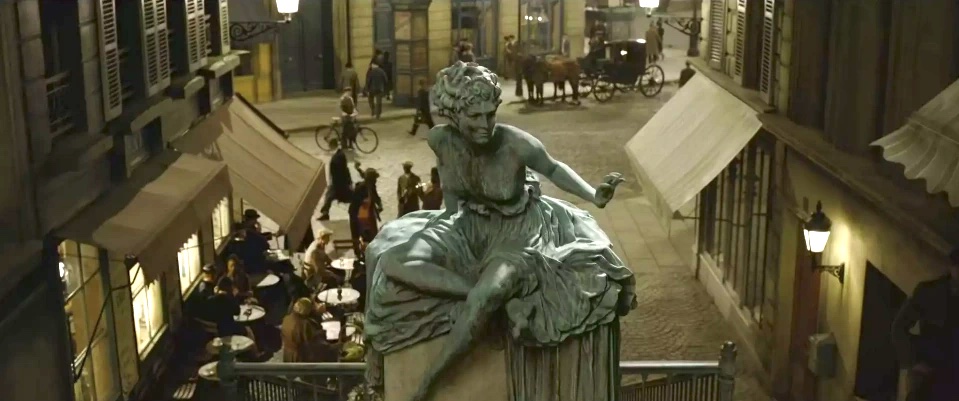
Nearly all of what we know about Epic Universe is thanks to the reporting of the incomparable Orlando Park Stop, where Alicia Stella’s coverage of the in-production park has proved to be consistently spot-on with construction. That’s how we know, for example, that Epic Universe’s corner of the Wizarding World has always been planned to be a world away from Hogsmeade and Diagon Alley.
This corner of the Wizarding World was meant to transport guests to a 1920s version of Paris, and specifically, the French wizarding community’s equivalent of Diagon Alley called Place Cachée (or “Hidden Place”).
On the surface, it made good sense. Since it’s seen only briefly in the second Fantastic Beasts film, the concept of Place Cachée offers an intriguingly blank slate for Universal Creative, who can populate the Parisian streetscape with a unique spread of the kinds of shops and restaurants that the “Living Land” formula requires. More importantly, though, both Warner Bros. and Universal clearly expected Fantastic Beasts to be a hit, so stepping into this 1920s, Parisian corner of the Wizarding World would’ve presented an interesting new place and a whole new set of stories and characters to build off of.
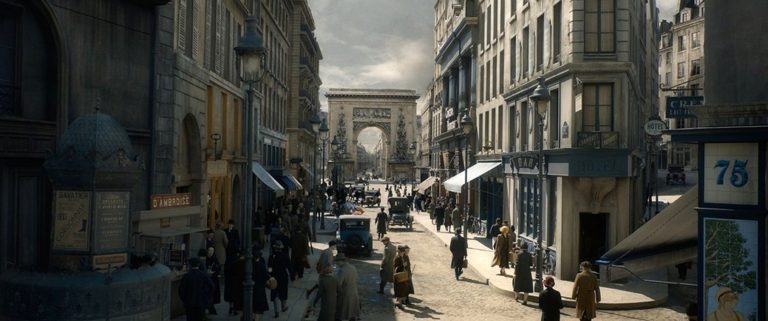
And initially, Stella reports, Universal Creative did plan that at least one of the land’s major attractions would be specifically themed to Fantastic Beasts. Of course, given the franchise’s apparent lack of pop culture permanence (not to mention its premature end), it makes sense that Universal would choose not to go forward with a ride explicitly tied to the series. Instead, this Parisian-set corner of the Wizarding World will allegedly see its attraction leap forward to Harry Potter‘s time, drawing upon characters and stories set up in the original Harry Potter franchise. (We’ll explore how on the next page.)
As a result, while a glimpse into the French corner of the Wizarding World is compelling expansion of the franchise’s mythos, unlike Diagon Alley and Hogsmeade, Paris’ briefly-viewed-in-a-spinoff boulevard of magic shops probably isn’t a place fans are necessarily yearning to visit. That’s okay! We’ve seen in Disney’s Avatar and Star Wars lands how creatives can use their skills to whisk guests to new places from the stories they know that aren’t necessarily seen-on-screen.

And you know what? Even without Fantastic Beasts, there’s no real reason why Place Cachée wouldn’t be an interesting place to visit, and a compelling new “third” of the Wizarding World. After all, at worst, it’ll read as an “original place” existing “just off screen” in the Harry Potter canon. Sure, Harry, Ron, and Hermione never visited Paris that we know of… but seeing Paris’ version of Diagon Alley will feel like stepping into a corner of the Wizarding World where you can (to borrow and adapt a phrase from Galaxy’s Edge) “live your own Harry Potter adventure” for once instead of merely following in others’ footsteps.
So for better or worse, Epic Universe will bring to life a corner of the Wizarding World as only seen in the now-cancelled Fantastic Beasts spin-off series – even if it’ll no longer explicitly tie to that franchise’s timeline or characters.
But you know how we are here at Park Lore. Which is why, just for fun, we wanted to take some time to think big. What could a third Wizarding World have looked like if Fantastic Beasts had never come around? We’ll breeze through our Blue Sky ideas on the last page…


